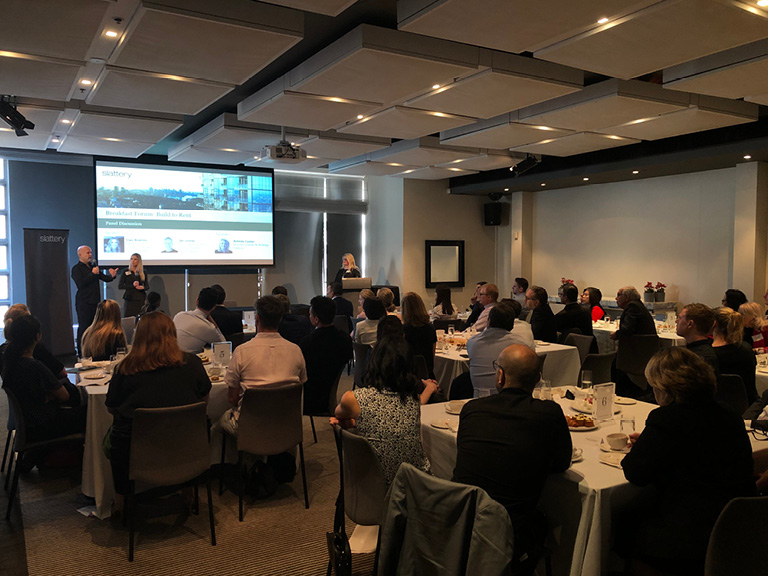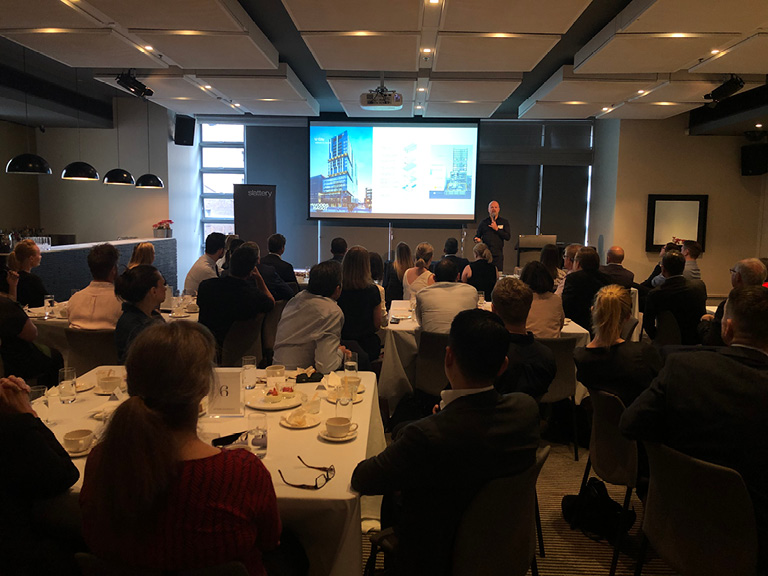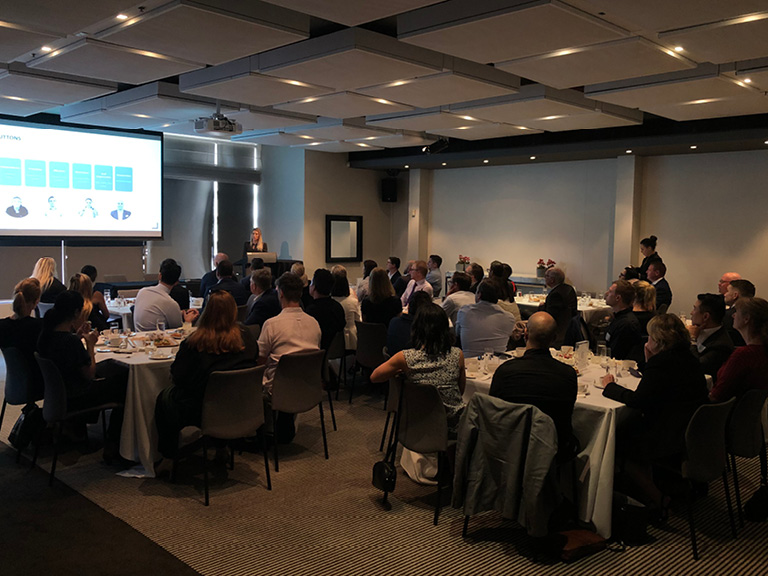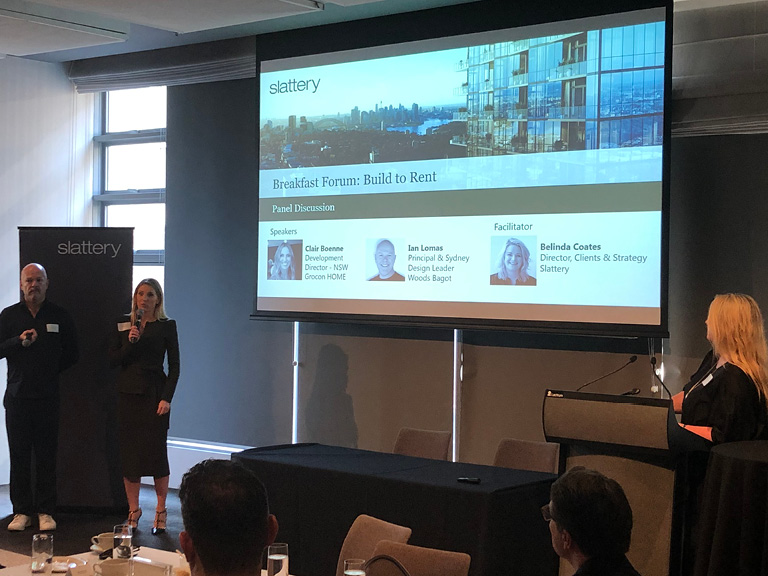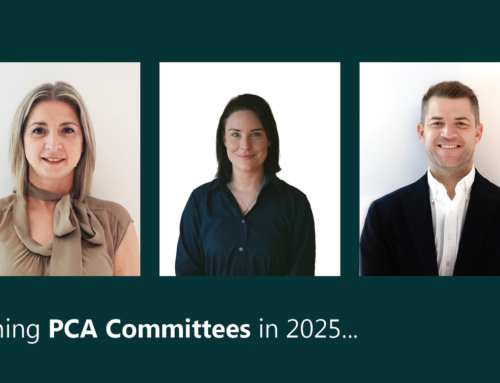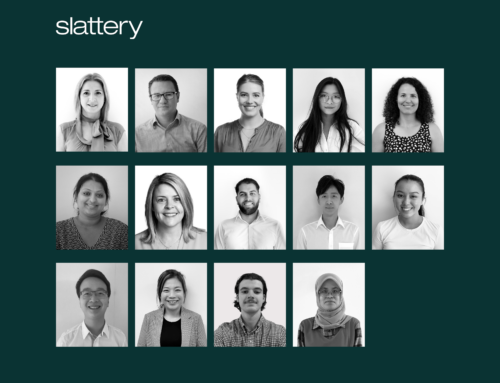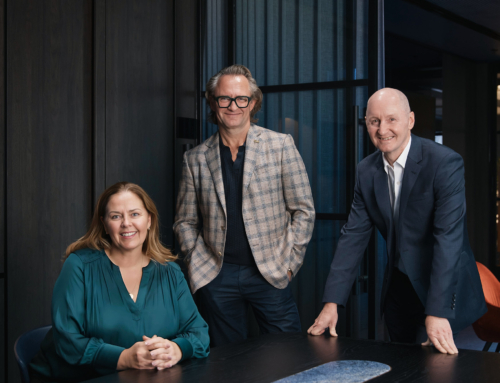This morning Slattery hosted a Breakfast Forum in Sydney on ‘Build to Rent – Unravelling the Myths’ at Merivale’s Establishment. Speakers included Clair Boenne, Development Director from Grocon HOME, and Ian Lomas, Principal & Sydney Design Leader from Woods Bagot. The presenters participated in a Q&A with the audience facilitated by Belinda Coates, Director of Clients & Strategy at Slattery.
Clair Boenne’s presentation gave an insight into the Australian property market, housing investment sector, and Grocon’s Build to Rent development model for the growing population of young professionals. The key points in her presentation were as follows:
- BTR is a feasible model for a wide range of age groups (ages 20-70+) in comparison to the existing models of student accommodation, co-living and senior living which are developed to cater for a specific age for people in their lifetime.
- Investment volumes by share show that the BTR model is an established institutional asset class outside Australia in countries such as the United Kingdom. In the UK, the BTR sector has grown rapidly and continues to grow, with a 478% growth in the past five years.
- The Australian market is at a similar phase as the UK was while developing the BTR model – strong population growth, hike in rent due to affordability, consumer preference/constrained supply due to low rental vacancies, issues with planning system and lack of developer credit.
- Australian population comprises of 50% millennials and young professionals who lease properties and prefer to live in one place for over 3 years.
- Based on the above statistics and demographics, Grocon is developing a BTR model catering to the young professional population. This model comprises of luxury apartments allowing improved lifestyle, freedom to customization, and self-expression. This model is also comprised of premium environments and services offerings like dog walking, fitness/wellbeing, co-working spaces, media rooms, event spaces and more.
- Grocon’s live examples of Parklands and Commonwealth Village in the Gold Coast (now known as Smith’s Collective) is a testimony to their success.
Ian Lomas’ presentation was a great insight into the sense of community inclusiveness, and planning/design strategies required to facilitate the BTR development model. Ian gave a precedence of the live projects in the other markets as well as the emerging community housing in Australian market to put forward a strong case of the BTR housing model. The key points in Ian’s presentation were as follows:
- The idea of community housing improves the wellbeing of a person and gives a sense of community inclusiveness; housing models today are displacing sense of this.
- There are wide range of different housing models worldwide such as social housing, affordable discounted market model, rent to buy model, custom built model, student accommodation, youth and elderly accommodation and more which makes housing more affordable than the built to buy housing model wherein the payback period is quite long and thus not being a feasible option for the average millennial.
- Different development models require different ways to address the planning system and design strategies allowing them to become a success.
- BTR housing model for the Australian market can be defined by taking a precedence of different housing models and live projects worldwide. This would help the Australian market to find the right niche to develop the BTR model. For example, one of the successful projects based on the BTR model is the Amberly in New York – for a small weekly premium the renter gets better facilities and living in a great location giving a good appeal to the average renter.
Take away points
From Ian and Clair’s presentations, it is clear that Australian housing market is at a point where it needs a new sensible housing model due to the rise in transport infrastructure, population growth and the prevalent age demographics. BTR model could be the key to create affordable housing for all in Australia. But the market still has a long way to go. A significant intervention in the planning system could go a long way by providing incentives to the financial investors and lowering their risks. Likewise, the building codes and design standards need to be altered to deliver a long-term rental product than an owner occupier product. BTR development model is a great opportunity for the Australian housing market and needs to be looked into potentially ensuring affordable housing for all in the future.
We thank our presenters, facilitator, and those who attended this signature event in property.
